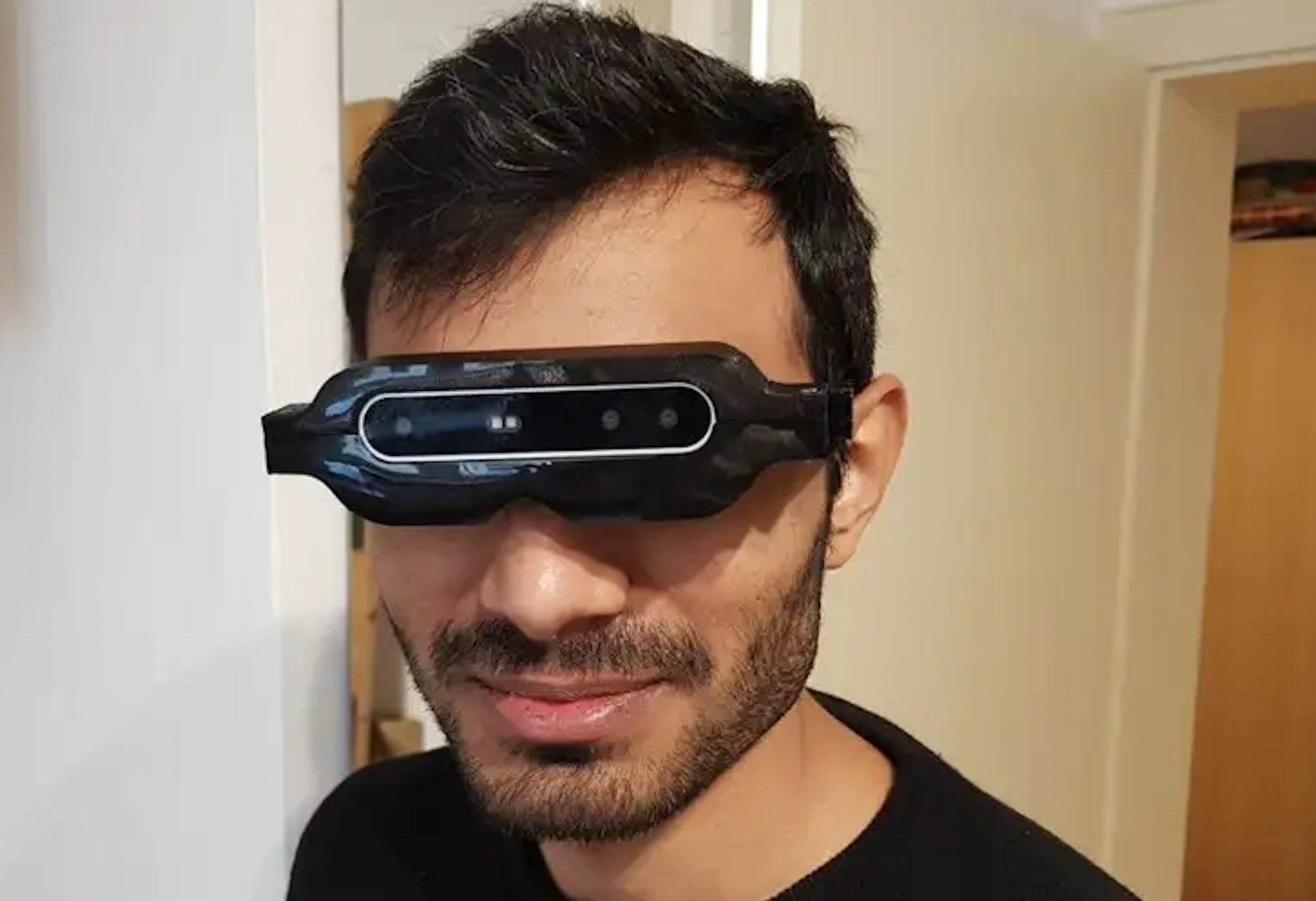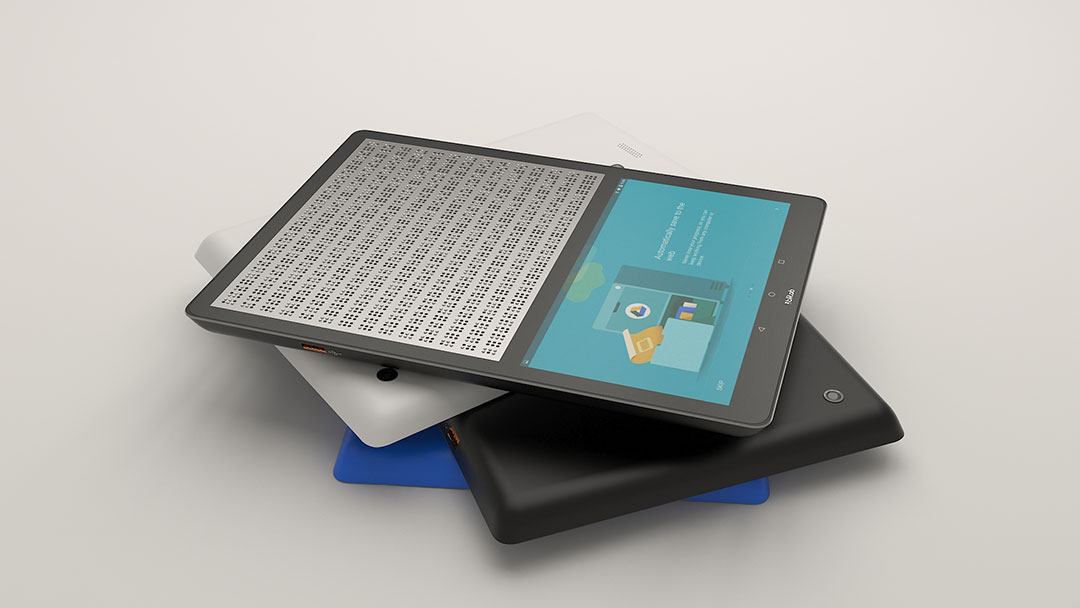Discover Innovative Tools Developed for the Aesthetically Damaged
The advancement of cutting-edge devices for the aesthetically impaired represents a substantial development in accessibility and independence. Technologies such as smart glasses with AI capabilities and mobile applications made to offer acoustic summaries are improving day-to-day experiences for users. In addition, wearable devices that employ haptic responses boost environmental understanding, while modern-day Braille innovations supply brand-new ways to involve with text. As these tools proceed to progress, their influence on the lives of those with visual impairments raises essential questions regarding the future of inclusivity and freedom in different elements of life. What exists ahead in this technological landscape?
Smart Glasses for Navigation

Smart glasses created for navigation are revolutionizing the way aesthetically damaged individuals communicate with their setting. These advanced gadgets make use of a combination of electronic camera innovation, expert system, and auditory comments to give real-time information about environments. By employing obstacle detection systems, smart glasses can alert customers to prospective hazards, enabling much safer wheelchair in both acquainted and unfamiliar settings.
The integration of GPS technology better improves navigating abilities, permitting individuals to get acoustic directions as they move. This hands-free technique not only cultivates independence but also encourages visually damaged people to navigate urban landscapes with raised confidence. Furthermore, many wise glasses are equipped with attributes that identify sites and road signs, giving contextual info that enhances the user experience.
Additionally, the advancement of these tools is consistently advancing, with firms working to enhance the precision of things recognition and increase the variety of navigational attributes. As smart glasses come to be more easily accessible and inexpensive, they hold the potential to significantly transform every day life for aesthetically damaged customers. Inevitably, these cutting-edge devices represent an important action toward inclusivity, offering boosted mobility and a greater sense of autonomy for people navigating the world around them.

Mobile Application for Daily Living
How can mobile applications improve the every day lives of visually impaired individuals? Mobile apps are reinventing the method aesthetically impaired users browse their atmospheres, handle day-to-day tasks, and gain access to details. These applications offer necessary assistance with different functionalities, fostering freedom and boosting top quality of life.
Several innovative mobile apps are made specifically for daily living. Applications like Be My Eyes connect aesthetically impaired users with sighted volunteers using video clip telephone calls, enabling them to receive real-time help with tasks such as reading tags or navigating strange areas. Seeing AI, developed by Microsoft, makes use of man-made intelligence to describe surroundings, checked out message, and determine objects, effectively changing a smart device into a powerful device for day-to-day aid.
Additionally, navigation apps customized for the aesthetically damaged, such as Aira and BlindSquare, provide audio-based directions and environmental details, allowing customers to traverse their surroundings securely and confidently. Beyond navigating and instant assistance, mobile apps likewise sustain organization and job management, with functions that aid customers set suggestions, develop order of business, and track appointments. In recap, mobile applications act as important resources, encouraging visually damaged individuals to lead even more independent and meeting lives.
Wearable Technologies for Aid
Empowerment through technology is significantly noticeable in the realm of wearable devices developed to help visually impaired individuals. These cutting-edge tools integrate flawlessly right into every day life, enhancing navigating and giving crucial feedback to individuals. For circumstances, clever glasses equipped with cams can identify faces and review text aloud, enabling customers see here now to interact more with confidence in expert and social setups.
Another noteworthy innovation is using haptic feedback systems in wearable tools. These systems make use of vibrations or other tactile signals to convey info concerning the user's environment, such as challenges same day eye appointment near me or modifications in surface, boosting wheelchair and security. Wearable modern technologies likewise include wristbands that connect to mobile phones, notifying users to notices with subtle resonances, hence enhancing connection without dependence on visual hints.
As these innovations remain to advance, they are not just boosting self-reliance for visually impaired people yet also fostering a higher sense of addition in culture. By connecting the void between obstacles dealt with in daily living and the possibility for autonomy, wearable technologies work as critical devices in the quest for equal rights and empowerment for those with aesthetic problems.
Audio Description Tools
Sound description devices play a vital duty in improving ease of access for visually damaged people, providing them with the capability to involve with visual media. AI-powered visual aids. These tools offer narrated descriptions of key visual aspects in movies, television shows, and live performances, guaranteeing that individuals can totally understand the context and emotions conveyed with visuals
Audio summary can be incorporated right into different platforms, consisting of streaming solutions, cinema testings, and live movie theater. Lots of preferred streaming solutions currently include audio summary as an availability attribute, permitting customers to choose it conveniently. Along with traditional media, specialized applications likewise exist, offering audio descriptions for art exhibitions, museums, and various other cultural occasions.
The efficiency of audio description depends upon the ability of the narrators, that must convey visual information succinctly without diminishing the original audio. Technologies in this area are additionally leading the way for more tailored experiences, where users can readjust the degree of information and pacing according to their preferences.
Braille Innovations and Instruments
Braille gadgets and developments have actually considerably transformed the method visually impaired people communicate with text and details. Modern improvements have caused the growth of functional view devices that enhance proficiency and self-reliance amongst customers. Significantly, Braille show modern technologies have progressed, permitting for vibrant reading experiences. These gadgets convert digital message right into Braille, enabling customers to access a large variety of details on tablet computers, smartphones, and computers.
Furthermore, portable Braille notetakers integrate standard Braille input with modern-day capabilities, facilitating note-taking, scheduling, and paper modifying on the move. Smart glasses for the visually impaired. These compact devices typically feature text-to-speech capabilities, bridging the void in between Braille and auditory info
Additionally, innovative Braille printers have arised, permitting users to produce Braille tags, records, and instructional products effectively. This accessibility cultivates higher participation in professional and instructional environments, inevitably advertising inclusivity.
Moreover, research right into clever Braille innovations remains to increase. Tools that incorporate expert system are being checked out to offer real-time navigating help and contextual information, boosting the individual experience in varied setups. Generally, these developments reflect a dedication to empowering aesthetically impaired individuals via innovation, guaranteeing they can conveniently access and engage with the globe around them.

Final Thought
The improvement of ingenious tools for the visually impaired substantially improves freedom and lifestyle. Smart glasses, mobile applications, wearable modern technologies, audio summary devices, and Braille advancements collectively encourage people by giving crucial navigating support, environmental awareness, and improved reading experiences. These technologies not just foster higher addition but additionally advertise autonomy in daily activities, ultimately adding to an extra easily accessible and equitable culture for aesthetically impaired individuals. Proceeded advancement in this field holds assurance for additional enhancements.
As smart glasses come to be much more budget-friendly and accessible, they hold the potential to dramatically transform everyday life for aesthetically damaged users. Mobile apps are reinventing the way visually impaired customers browse their environments, manage daily jobs, and accessibility information. Apps like Be My Eyes attach aesthetically impaired users with sighted volunteers by means of video clip telephone calls, permitting them to receive real-time support with jobs such as reviewing tags or browsing unfamiliar spaces.Additionally, navigating applications tailored for the visually impaired, such as Aira and BlindSquare, use audio-based directions and ecological information, enabling users to traverse their surroundings safely and confidently.The improvement of ingenious devices for the aesthetically damaged significantly enhances independence and quality of life.